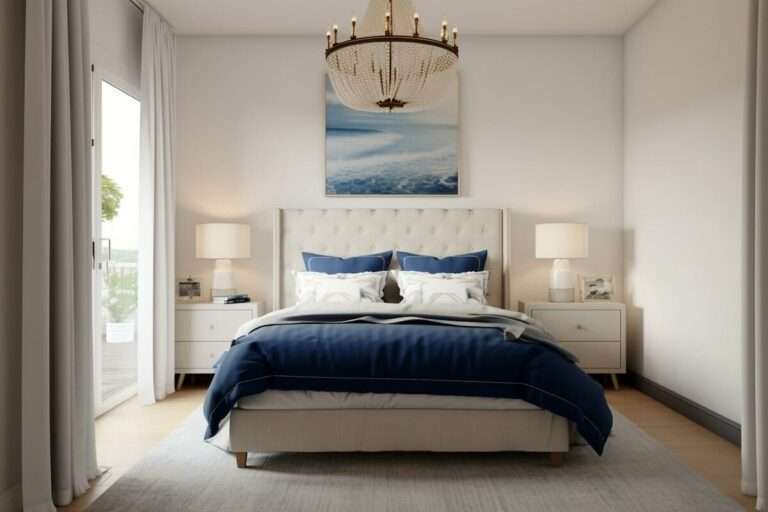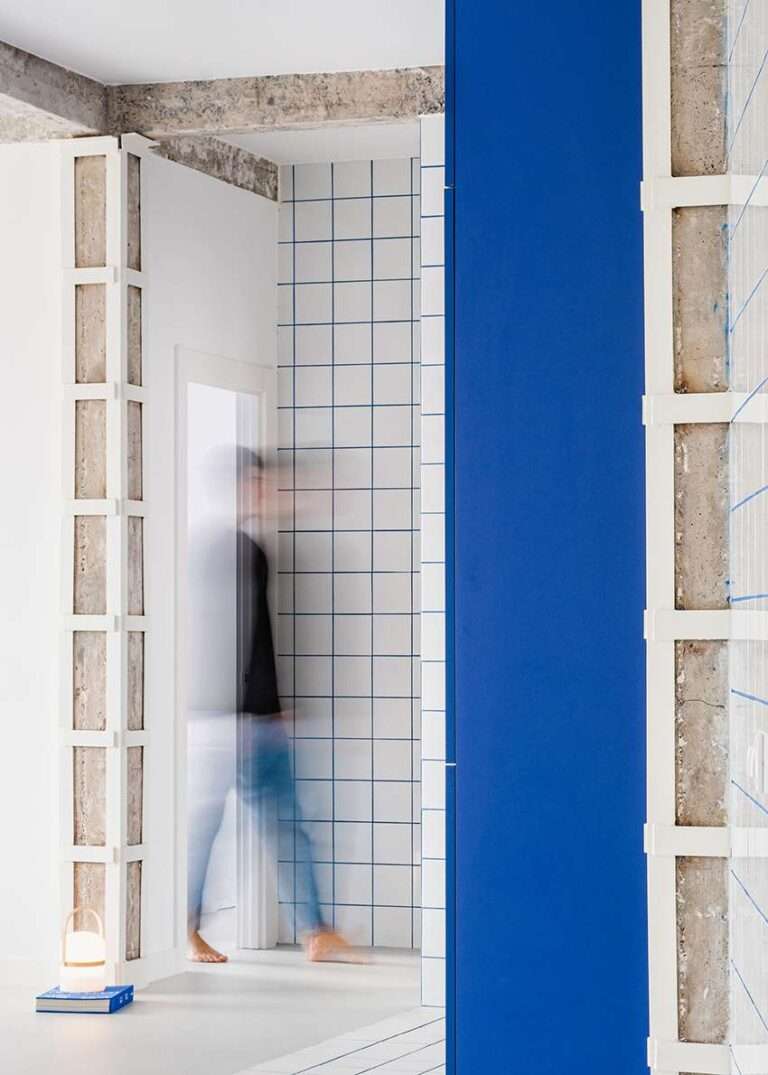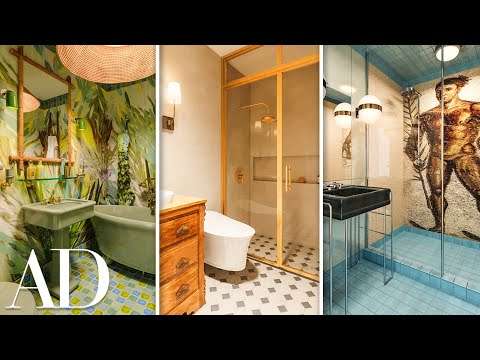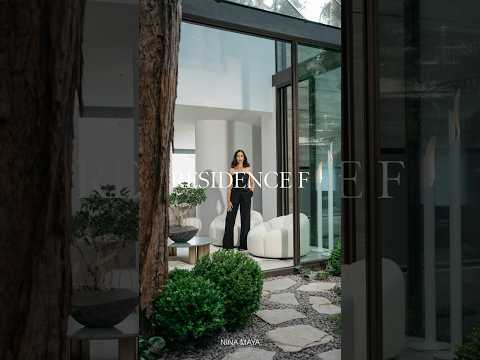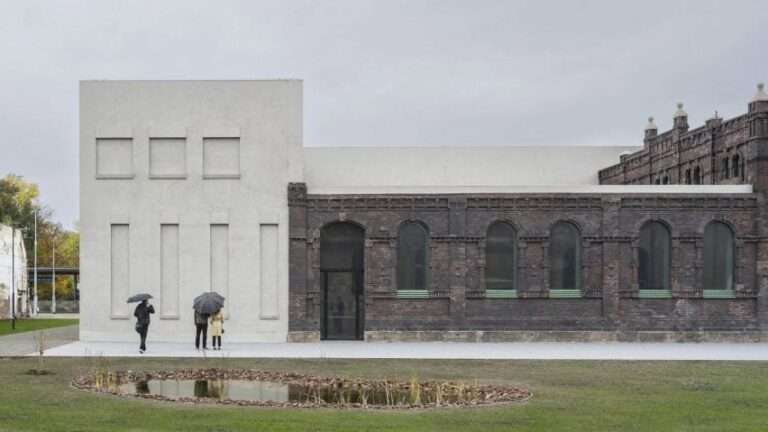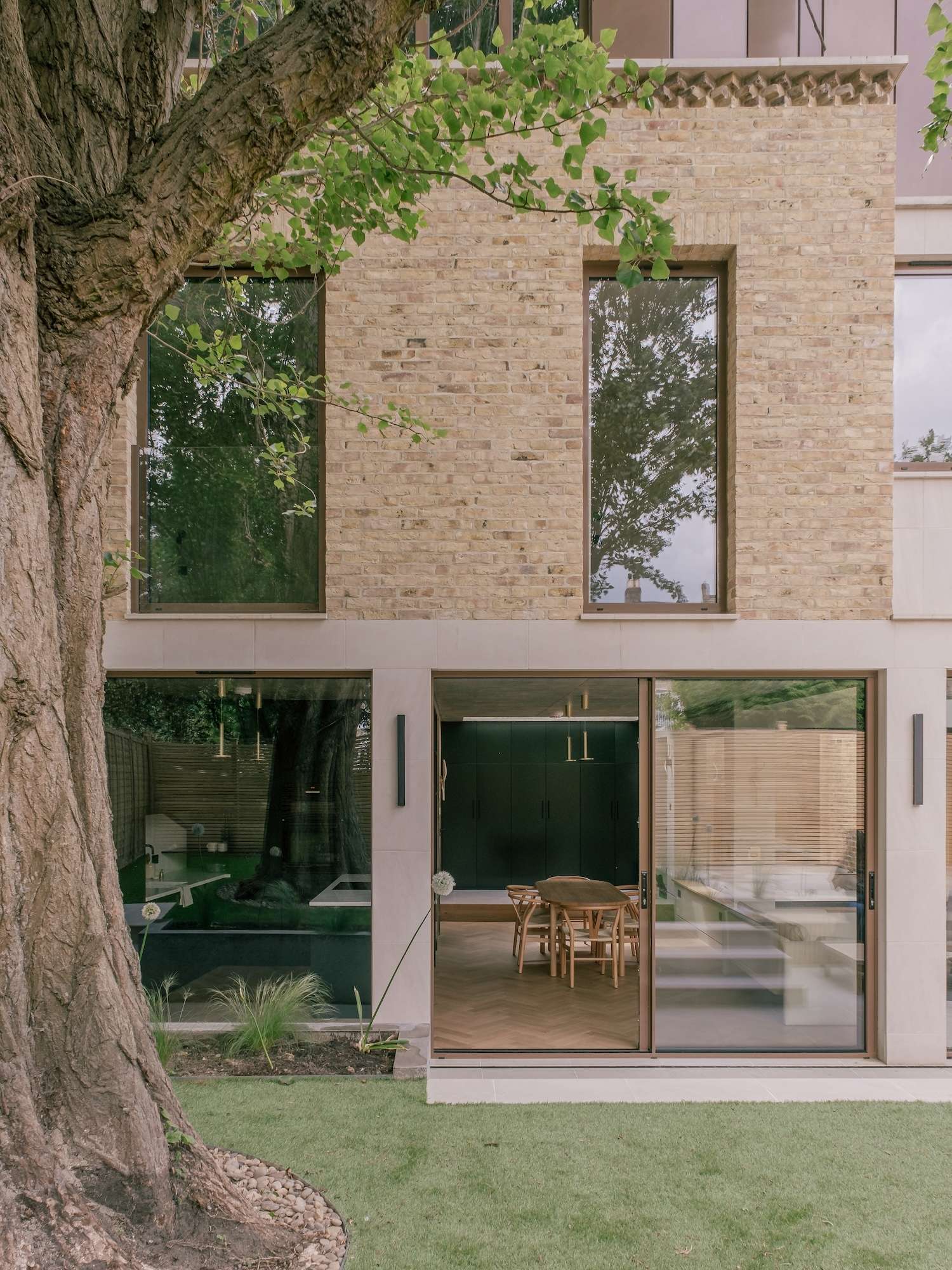
Lee Terrace is a minimal home located in London, United Kingdom, designed by Mailen Design. A shaft of light pierces through the carefully positioned skylight, casting geometric shadows across the exposed concrete ceiling of Lee Terrace – a moment that encapsulates Mailen Design’s integration of contemporary minimalism with historical context. Like the mews houses that inspired it, this new build in Blackheath’s conservation area demonstrates how architecture can bridge past and present through thoughtful material dialogue.
The design’s sophistication emerges in its strategic layering, both literal and metaphorical. The stepped façade creates a visual rhythm that pays homage to the surrounding Grade II listed Victorian properties while asserting its own quiet confidence. London stock brickwork and pre-cast stone ground the structure in local architectural vernacular, while the crowning volume’s undulating bronze aluminum panels introduce a contemporary accent that feels both fresh and familiar.
“The design process was deeply informed by the site’s existing natural elements,” reflects Mailen Design’s approach, evident in their careful collaboration with arboriculturalists to preserve two mature trees. This commitment manifests in subtle but significant design choices – the recessed courtyard accommodating a lime tree’s branches, the foundation layout protecting root systems. Such decisions reflect a broader philosophy where sustainable innovation works in harmony with established ecosystems.
The interior presents a masterful study in material contrast and spatial flow. A table anchors the dining space between the entrance and the U-shaped kitchen, where marble worktops and forest green cabinetry create a sophisticated dialogue with the exposed concrete surfaces above. The herringbone parquet flooring adds warmth and historical reference, while floor-to-ceiling glazing dissolves boundaries between inside and out, making the garden an integral part of the daily living experience.
Raw materiality plays a crucial role throughout – exposed concrete, oak joinery, and ceramic tiles create a tactile progression through the space. These elements are neither purely aesthetic nor merely functional, but rather serve to root the home in both contemporary craft practices and timeless building traditions.
What makes Lee Terrace particularly significant is how it demonstrates the possibility of introducing sustainable new construction within historically sensitive areas. The air-source heat pump, high-performance insulation, and strategic glazing showcase how contemporary environmental consciousness can be seamlessly integrated into designs that respect architectural heritage.
